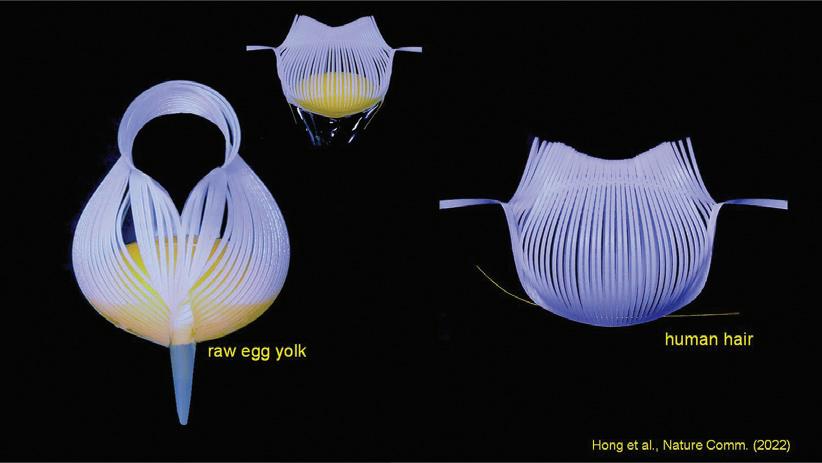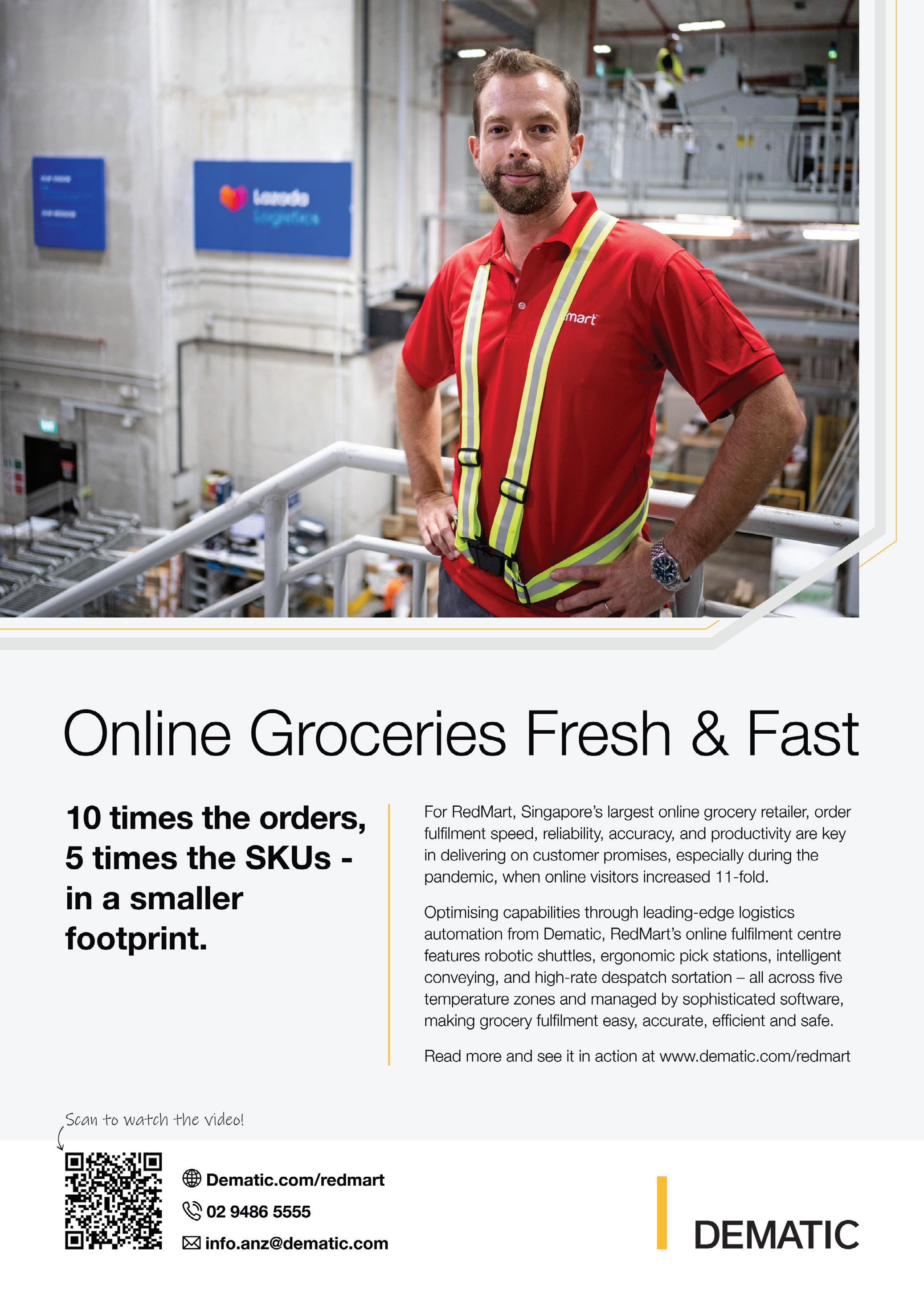
9 minute read
Canning experts discuss hygienic machine design
An increasing number of beverages are being filled into cans worldwide, with the diversity of products seeing a similar increase. This is the reason why canners make particularly high demands on flexibility and the hygienic design of machinery.
Thanks to many years of partnership, KHS and Ferrum technical systems are attuned to one another enabling beverage producers to make hygienically designed products.
The compact Innofill Can C from KHS, for example, features flexible, taste-neutral filling, among others. This is supplemented by matching seamer systems FC06 and FC08 from Ferrum which have an open design making them easy to clean. Combined, both machines make for an efficient filling process.
The world demand for trend beverages such as hard seltzer, energy drinks and craft beer continues unabated. Here, the can is often the container of choice, said Manfred Härtel, filling technology product manager at KHS. “It’s light, easy to recycle and keeps products fresh for longer with its excellent barrier properties.” This type of container is increasingly being favoured for established beverages such as soft drinks, water and mixed beer beverages.
According to Härtel, this is prompting a good number of beverage filling operations to increase their range in the can segment and fill more and more different products on the same line. “This means higher demands are made of the machine’s flexibility and hygiene,” the KHS filling expert explained. “For the greater the product variety on a line, the greater the risk of contamination and flavour carryover.”
KHS provides two fillers for the can segment: the Innofill Can DVD for the high-performance range and the Innofill Can C designed for small to medium filling quantities. Thanks to a new addition to the series that boosts capacity to up to 60,000 cans per hour, the Innofill Can DVD’s little brother can now be integrated into lines with higher outputs even more effectively. It is also extremely flexible, enabling several different products and formats to be processed on a single line. “The Innofill Can C is distinguished by its fast format changeovers and set-up times. This in turn increases the availability and economy of the system,” is how Härtel described the benefits of this particular filler.
In view of the increasing number of beverage variants being processed, during development special attention was paid to the hygienic machine design and providing protection against flavour carryover. In the product area the filling valves on the KHS can fillers are thus equipped with PTFE expansion joints (Teflon) in place of conventional seals. The sliding seals in the bell guides have also been replaced by Teflon expansion joints to create gapless, hygienic seals. These effectively protect the product from contamination and are easier to clean. Moreover, the electropneumatic lifting and positioning of the bells when sealing cans further contributes to a safe filling process. “Also doing away with water lubrication in the filler carousel area shortens exterior cleaning intervals by up to 20%,” Härtel said.
As an option, the Innofill Can C can also be fitted with a HEPA filter that removes potential bacteria from the air in the machine’s interior. Another option available on request

Ferrum seamer (pictured left) and Innofill Can C (pictured above) is warm filling. This prevents condensation and thus microbiological contamination such as mould from being formed.
Hygienic design for seamers
The greatest importance is attached to the hygienic design of all components in both the ferruBasic and FC series with seamers FC06 (15,000 to 45,000 cans per hour) and FC08 (19,000 to 60,000 cans an hour). “When developing our seamers, we consciously went for an open design without cladding. This makes the components easy to clean and the machine readily accessible to operators,” explained Jörn Winkelmann, process engineer and hygiene expert at Ferrum. In the FC series — compatible with the KHS Innofill Can C — the use of several different angled levels allows condensation and other unwanted liquids to easily run off and not enter the open beverages cans. For the same reason the conveyor segment features regularly spaced openings and the components have an extremely high surface quality to prevent microbiological deposits. Another item of note is the design of the seals that are easy to sanitise as they are installed on the exterior of the machine. The seamer section is made entirely of stainless steel and provides maximum durability even when aggressive cleaning media are used. For can seamers F12 (35,000 to 105,000 cans per hour) and F18 (51,000 to 150,000 cans an hour) in the ferruBasic series, the Swiss company provides optional hygiene packages whose components are largely installed in the FC series as standard. These include, among other things, installation of an inclined base plate (on the F12 only) and various adaptations to tools that have a positive impact on machine hygiene. Furthermore, since very recently the welded cladding around the upper parts in the standard version has consisted entirely of stainless steel. Ferrum systems F12 and F18, designed for the high-performance range, are therefore a useful addition to the KHS Innofill Can DVD can filler. In the future, KHS and Ferrum plan to further intensify their cooperation. KHS Pacific Pty Ltd www.khs.com


©stock.adobe.com/au/Elena Moiseeva
Robotic gripper with a delicate touch
Engineering researchers from North Carolina State University have demonstrated flexible, robotic grippers that are able to lift delicate egg yolks without breaking them, and that are precise enough to lift a human hair. The work, published in Nature Communications, has applications for both soft robotics and biomedical technologies.
The grippers draw on the art of kirigami, which involves both cutting and folding two-dimensional (2D) sheets of material to form three-dimensional (3D) shapes. Specifically, the researchers have developed a new technique that involves using kirigami to convert 2D sheets into curved 3D structures by cutting parallel slits across much of the material. The final shape of the 3D structure is determined in large part by the outer boundary of the material. For example, a 2D material that has a circular boundary would form a spherical 3D shape.
“We have defined and demonstrated a model that allows users to work backwards,” said Yaoye Hong, first author of a paper on the work and a PhD student at NC State. “If users know what sort of curved, 3D structure they need, they can use our approach to determine the boundary shape and pattern of slits they need to use in the 2D material. And additional control of the final structure is made possible by controlling the direction in which the material is pushed or pulled.”
“Our technique is quite a bit simpler than previous techniques for converting 2D materials into curved 3D structures, and it allows designers to create a wide variety of customised structures from 2D materials,” said Jie Yin, corresponding author of the paper and an associate professor of mechanical and aerospace engineering at NC State.
The researchers demonstrated the utility of their technique by creating grippers capable of grabbing and lifting objects ranging from egg yolks to a human hair.
“We’ve shown that our technique can be used to create tools capable of grasping and moving even extremely fragile objects,” Yin said.
“Conventional grippers grasp an object firmly — they grab things by putting pressure on them,” Yin said. “That can pose problems when attempting to grip fragile objects, such as egg yolks. But our grippers essentially surround an object and then lift it — similar to the way we cup our hands around an object. This allows us to ‘grip’ and move even delicate objects, without sacrificing precision.”
There are a number of other potential applications, such as biomedical technologies that conform to the shape of a joint such as the human knee, which the researchers are now exploring.
Jie Yin, North Carolina State University
DE F I N I N G T HE N EX T G E NE R ATI ON O F SPR AY D RYI NG AND C O ATI N G T ECH NO L OG Y
Fluid Air is defining the next generation of spray drying technology by creating scalable powder manufacturing solutions.

Our innovative PolarDry® technology utilises milder temperatures to produce powders, leading to large efficiency gains for your business.
Electrostatic spray drying is a low-temperature drying technique that combines dual-fluid atomization and electrostatic charge in a single-step process for conversion of liquid feed into powder. Fluid Air has the range to suit the size and needs of your business with machines tailored for R&D, feasibility studies, as well as small, medium, and large-scale commercial manufacturing.
For enquiries, contact us at tiago@spray.com.au spray.com/en-au
Phone 1300 079 998 Spraying Systems Co. 8 Moorinna Way, Truganina Victoria Australia 3029
NEWS OFS moves into US market with Pelican Brewing deal



Australian manufacturing performance software company OFS has debuted in the United States via a partnership with Oregon-based craft brewery Pelican Brewing Company.
The brewing company has locations around Portland’s coast, produces 50,000 barrels of beer each year and sells its products in four states. Additionally, it is known for its beer-on-demand service for retail and consumer customers. With expansion potentially on the horizon, the brewer wanted more insights into its operations and hoped to reduce waste and improve efficiency.
OFS’s software solution was ideally suited for such a requirement. It is able provide manufacturers with accurate production line data using sensors and monitoring software. It has been used by other brewers in Australia along with a selection of other companies such as AstraZeneca.
“We had used other software before, but it never had the right levels of automation or any real-time data,” said Martin Bills, Director of Brewing Operations, Pelican Brewing Company.
“My ears are well trained — I can tell if there’s an issue on the line, and in time I can figure out the cause. But OFS gives me and my team that information in real time so we can resolve it and get back to making beer.”
Real-time data from sensors in the production environment allowed for previously unknown problems to be identified. For instance, inefficiencies in the boxes in the bottling line were causing unplanned downtime. Implementing the OFS software helped solve this, just as it highlighted hundreds of small pauses elsewhere that added up to substantial lost time. Using the software has assisted in boosting the brewery’s operations and will help further as the company grows in the future.
The partnership between OFS and Pelican Brewing Company is the beginning of the software company’s move into the US. It is currently running proof-of-concept trials for its software in other parts of the country as it plans to further expand into the brewing industry there and to become the industry standard software.











